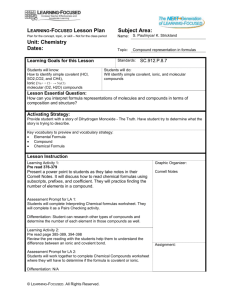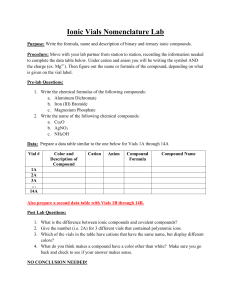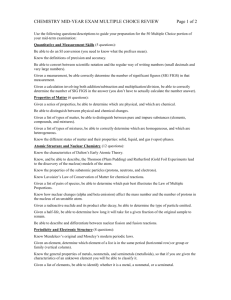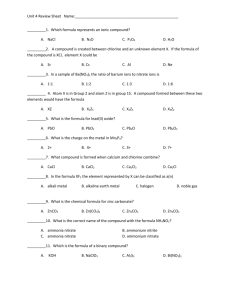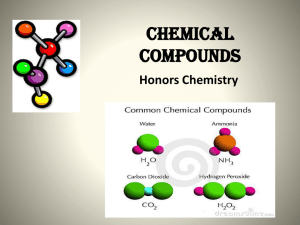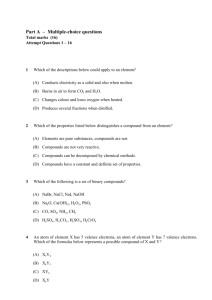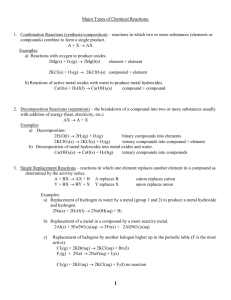“I Can” Checklist
advertisement
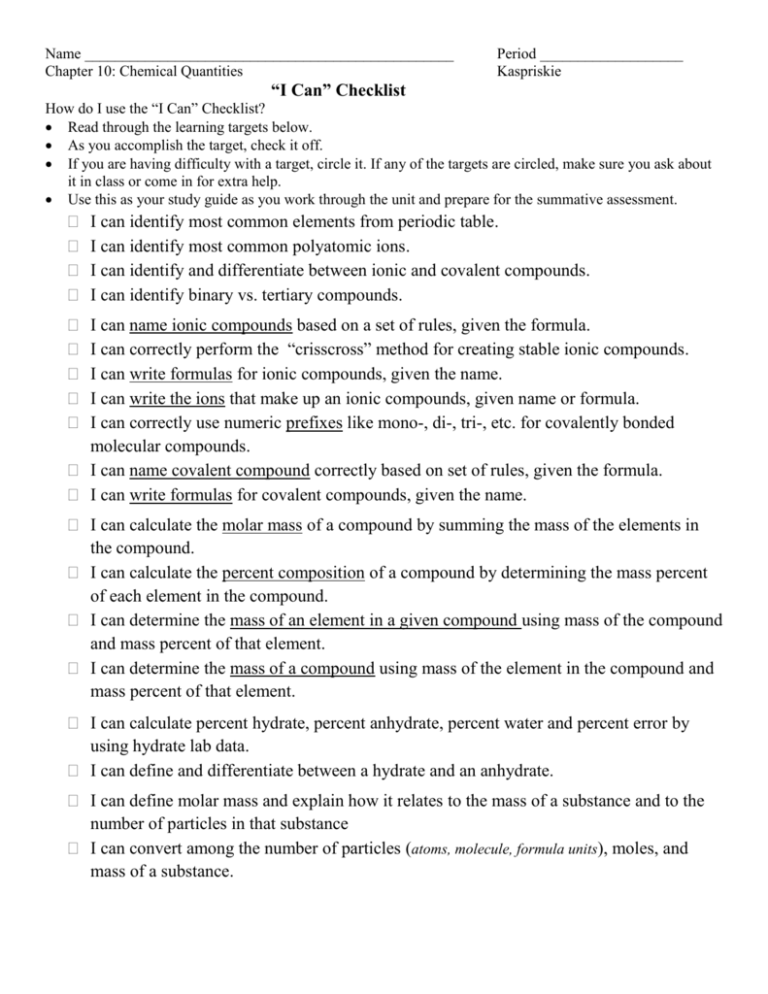
Name _________________________________________________ Chapter 10: Chemical Quantities Period ___________________ Kaspriskie “I Can” Checklist How do I use the “I Can” Checklist? Read through the learning targets below. As you accomplish the target, check it off. If you are having difficulty with a target, circle it. If any of the targets are circled, make sure you ask about it in class or come in for extra help. Use this as your study guide as you work through the unit and prepare for the summative assessment. I can identify most common elements from periodic table. I can identify most common polyatomic ions. I can identify and differentiate between ionic and covalent compounds. I can identify binary vs. tertiary compounds. I can name ionic compounds based on a set of rules, given the formula. I can correctly perform the “crisscross” method for creating stable ionic compounds. I can write formulas for ionic compounds, given the name. I can write the ions that make up an ionic compounds, given name or formula. I can correctly use numeric prefixes like mono-, di-, tri-, etc. for covalently bonded molecular compounds. I can name covalent compound correctly based on set of rules, given the formula. I can write formulas for covalent compounds, given the name. I can calculate the molar mass of a compound by summing the mass of the elements in the compound. I can calculate the percent composition of a compound by determining the mass percent of each element in the compound. I can determine the mass of an element in a given compound using mass of the compound and mass percent of that element. I can determine the mass of a compound using mass of the element in the compound and mass percent of that element. I can calculate percent hydrate, percent anhydrate, percent water and percent error by using hydrate lab data. I can define and differentiate between a hydrate and an anhydrate. I can define molar mass and explain how it relates to the mass of a substance and to the number of particles in that substance I can convert among the number of particles (atoms, molecule, formula units), moles, and mass of a substance.

